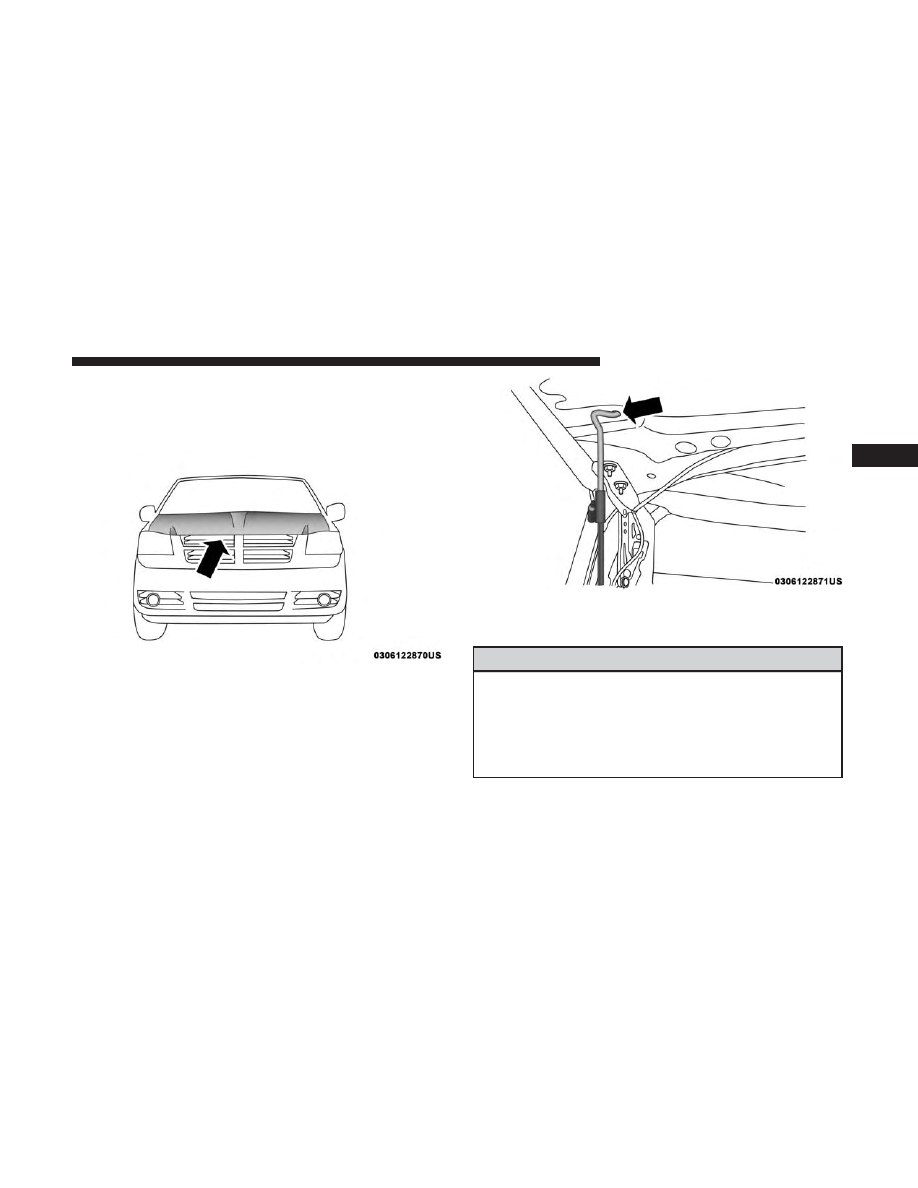Dodge Grand Caravan (2019 year). Manual - part 6

2. Move to the front of the vehicle and look inside the
center of the hood opening. Locate, then push the safety
catch downward while raising the hood at the same
time.
Use the hood prop rod to secure the hood in the open
position.
Closing The Hood
WARNING!
Be sure the hood is fully latched before driving your
vehicle. If the hood is not fully latched, it could open
when the vehicle is in motion and block your vision.
Failure to follow this warning could result in serious
injury or death.
Safety Lever Location
Hood Prop Rod
3
GETTING TO KNOW YOUR VEHICLE
93